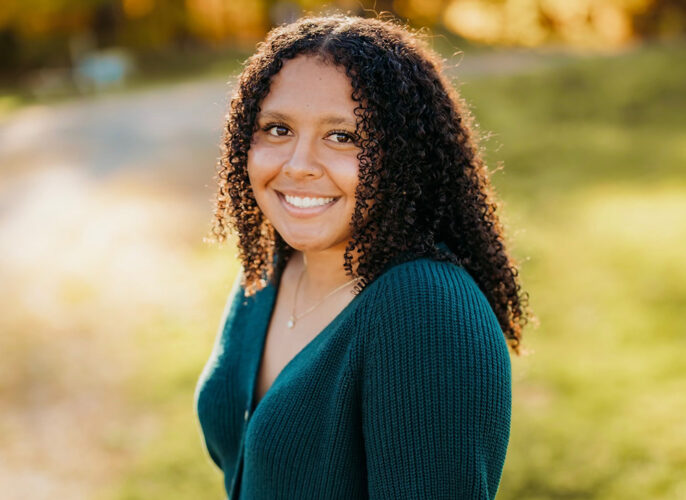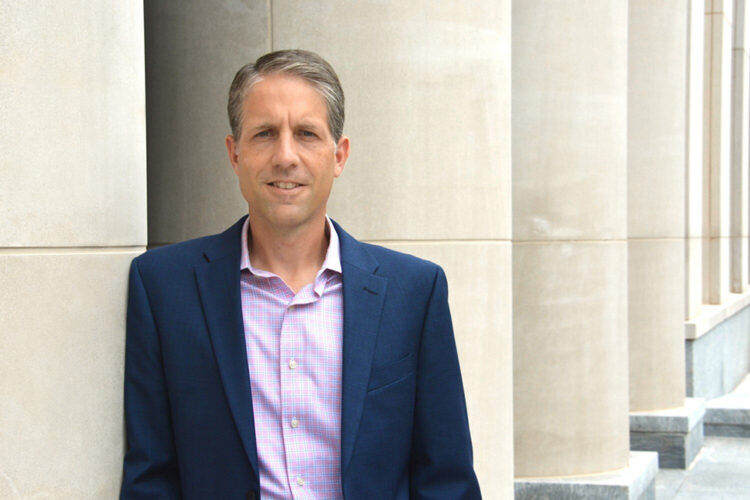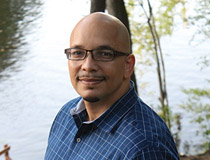Conservatives’ Civil Rights Complaints Target Meet-Ups for Students of Color
Complex legal issues surround new U.S. Education Department complaints that school gatherings for people of color discriminate against white students
By Asher Lehrer-Small | February 7, 2023Growing up in northern Vermont, people who looked like Irian Adii were few and far between. She recalls that her all-white second-grade classmates spread the rumor that the young girl, who has a Black father and white mother, was sick and contagious.
“No one would touch what I touched because they thought someone that looked like me must have been, like, riddled with disease,” Adii said. One peer told her to change her skin color like pop superstar Michael Jackson did.
After that experience, she went through the rest of elementary and middle school “actively trying to rid myself of any association” with what she perceived as “Black stereotypes.” She studied hard and chose not to wear the Batik clothing she bought when visiting her father’s relatives in Indonesia. Being different weighed on her.
But when, as a high school junior, she first attended a club meeting for students of color to connect with each other, she felt an instant sense of relief. It was the only time in her life she had been in a room with no white people, she realized, other than with family. The group was created to allow Black, Hispanic, Asian and Indigenous students to share about their experiences navigating the over 90% white, 800-person school.
“It felt so validating to just be in a room where you don’t have to give this huge backstory or explain yourself,” Adii said. “It made me feel like all of these little experiences, it’s not just happening to me. All these people can relate.”

Gatherings like the one described by the high school senior — often called “affinity groups” — have long been a strategy that schools, universities and workplaces employ to support community members who are from minority identities. But recently, those programs have become the target of pushback from conservative parent organizations, part of a wider GOP effort to oppose equity measures in K-12 education.
In early January, Parents Defending Education, a national nonprofit formed in 2021 to counter what it sees as indoctrination in schools, filed three federal civil rights complaints alleging that school-based affinity groups for people of color unfairly discriminate against white students and educators. The approach serves to “segregate” youth by race, violating the Civil Rights Act and the equal protections clause of the 14th Amendment, the organization’s letters say.
“Public schools that maintain policies or programs that discriminate against students on the basis of race are unconstitutional, period,” spokesperson Erika Sanzi wrote to The 74 in an email.
Those complaints come on the heels of at least eight others and a federal lawsuit the organization has filed since 2021 against districts in Colorado, Illinois, Massachusetts, New York, North Carolina and South Carolina over similar opportunities for students and educators of color. In the 2021-22 school year, the U.S. Department of Education’s Office for Civil Rights received more complaints than ever before, nearly 19,000. Some 2,900 of those alleged racial discrimination, but federal officials do not track how many claimed discrimination against white students.
Two of Parents Defending Education’s most recent complaints concern student groups in majority-white school districts — Ashland, Oregon and Shelburne, Vermont — and the third flags a staff group in Portland, Maine, where just over half of all students are youth of color compared to just 14% of all educators.
“Within such a homogenous workforce, affinity groups are one way to help people who may experience marginalization feel welcome and supported,” said Barrett Wilkinson, director of diversity, equity and inclusion for Portland Public Schools. The group for teachers of color has run since 2017 when it was founded by educators, he said, and “the district absolutely supports it and is proud of these kinds of efforts.”
Legal landscape
While affinity groups can be formed around any number of identities — religion, sexual orientation or political outlook, for example — school-based gatherings for students of a specific race or races may fall into murky legal water, scholars say.
According to Derek Black, education law professor at the University of South Carolina, there are two central considerations for determining the constitutionality of race-based affinity groups. First, does the program actually exclude certain students or educators based on race? And second, if so, does the race-conscious policy serve to remedy existing inequities?
Some affinity groups, while catered to students of certain races, do not actually exclude those of other identities. In Shelburne, Vermont, district spokesperson Bonnie Birdsall said all existing affinity groups, including the one for people of color and a sexuality and gender alliance, welcome “any student who would like to be involved.”
Others, however, are open only to students of certain races. Those programs are subject to “strict scrutiny,” said Black. A 2015 decision from the Obama administration’s Office for Civil Rights found an Illinois high school’s assembly for only Black students in the wake of the police shooting of 18-year-old Michael Brown was unconstitutional.
That precedent, when applied to the question around affinity groups, is “persuasive, but not exactly on point,” said Maryam Ahranjani, professor at the University of New Mexico’s School of Law. Affinity groups have a different structure and purpose than assemblies, she points out, and the Obama-era decision is “not binding law.”
When school-based programs are racially differentiated, their legality may depend on whether they serve to fix prior injustice, said Black, which can create “a legitimate, compelling interest” for their existence in the eyes of the law.
“The state can clearly engage in race-conscious actions … to remedy discrimination,” the law professor said.
Though the toll can be hard to quantify, researchers have documented that students of color in predominantly white schools typically face challenges such as a lack of curricular materials that reflect their racial identity and more strict disciplinary punishments than their white peers.
Thus, it matters whether racially differentiated affinity groups actually help address those problems, Black said. Over a dozen academic studies examine the gatherings, and most find wide-reaching benefits, including participants reporting increased self-confidence, reduced alienation and stronger dialogue between social groups afterward.

The legal landscape could shift, however, should the U.S. Supreme Court, as is widely expected, this spring gut or roll back the legal standing for affirmative action in higher education admissions — another race-based policy meant to address longstanding disparities. Such a ruling would “chip away” at the legal basis for race-conscious policies in schools, Ahranjani said.
The U.S. Department of Education said it could not comment on when the agency expects to issue a response to the Parents Defending Education complaints or what actions it may take.
When asked whether her organization would consider filing a lawsuit should it disagree with the agency’s response, Sanzi replied that “a number of options exist to remedy racial discrimination in public schools.”
‘Doesn’t hurt me one iota’
Jesse Tauriac is chief diversity officer and an associate professor of psychology at Lasell University. There, he leads several affinity groups on campus — including gatherings for first-generation students, student athletes, students of color and for conservative students at the predominantly liberal school.
The groups spur “more candid and frank” conversations, he said, and afterward, students “feel better equipped to engage and speak with people who have different perspectives.”

A student who participated in the group for conservatives on campus wrote an email to Tauriac after the experience: “As a conservative student who didn’t always believe that diversity and inclusion meant including my voice, you have proved me wrong.”
Whether affinity groups gather students of one political stripe or a shared racial identity, some familiar with the model say it confuses them why those who don’t share in those attributes or experiences would want to join.
Wilkinson, the director of equity for Portland schools, who is white, said it “wouldn’t occur” to him to want to participate in the district’s group for staff of color. “Why would I insert myself in that way?” he said.
Gail Burnett, an English as a second language teacher in Portland, penned an op-ed in the Portland Press Herald.
“As a white person, I don’t qualify for the [Black, Indigenous, people of color] Community Circle. I’m not offended by this any more than I would be offended if I found out that I couldn’t join a men’s support group or a group for staff members who are left-handed, or survivors of child abuse, or flute players. This is about them, not me. It doesn’t hurt me one iota,” she wrote.
However, Sanzi explained that her organization filed the complaints because “racial discrimination hurts everyone whether they are being included or excluded based on their skin color.”
Blake Jordan is a senior at Southern Oregon University and an active participant at his school’s Black Student Union. The college is in the same small city as the Ashland School District named in the legal complaint. His organization “focuses on Black experiences,” but is open to students of any race who want to learn about Black history, art and culture.
“I don’t think it’s the correct approach to make strong divisions along identities,” Jordan said. He acknowledged, however, that there’s a difference between higher education, where students generally have the maturity to center Black students’ voices in the club, and K-12, where white youth “might change the dynamic” by failing to fully listen to the experiences of their peers of color.
Adii, in Vermont, has tried to think about what it would mean for her high school’s affinity group to welcome white students. During the school day, she’s the only person of color in most of her classrooms. In those settings, she feels “a lot less apt to speak up around ideas of race, because I don’t really want to get met with pity from white people … and I also don’t want to feel invalidated,” she said.
The gathering for students of color, 40 minutes twice per week during a free period, is the only time she’s surrounded by people who directly relate to her experiences. Having white peers in the room could “undermine” the club’s purpose, she said.
“The conversations would just have to completely change and we’d have to kind of cater what we were doing based off white people — and that’s what I’ve been doing my whole life.”
Get stories like these delivered straight to your inbox. Sign up for The 74 Newsletter

